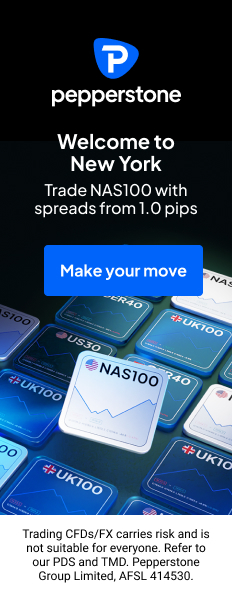In today’s digital world, online advertising is everywhere — from social media feeds to streaming sites. But not all ads are what they seem. Some carry a hidden danger known as malvertising — short for malicious advertising.

Malvertising is a cyberattack technique where hackers inject harmful code into legitimate online ads. These deceptive ads appear on trusted websites, luring users into unsafe destinations without their knowledge. Once clicked — or sometimes even just viewed — the malicious code can redirect users to infected sites, install malware, or steal sensitive data.
Because online ads are served through complex networks and multiple intermediaries, malvertising can spread quickly and reach massive audiences before being detected. This makes it not only dangerous but also highly profitable for cybercriminals.
How Does Malvertising Work?
The online advertising ecosystem involves many layers — publishers, ad exchanges, ad servers, content delivery networks (CDNs), and retargeting systems. When a user visits a website, ads load dynamically through several redirections across these networks.
Cybercriminals exploit this complexity by inserting malicious scripts at vulnerable points in the chain. When a compromised ad is displayed, the harmful code silently executes in the background or activates when the user interacts with the ad.
Once triggered, the malware can:
- Install ransomware, spyware, or trojans on the user’s device.
- Redirect users to phishing or scam websites.
- Track user activity and steal login credentials or financial data.
- Damage, delete, or encrypt files for ransom.
In some cases, attackers use exploit kits — special malware designed to scan for software vulnerabilities and automatically deploy the most effective attack method.
Malvertising vs. Adware: What’s the Difference?
Malvertising is often confused with adware, but the two work differently.
Malvertising operates through infected online ads hosted on legitimate websites. The attack happens externally—you don’t need to install anything for your system to be at risk.
Adware, on the other hand, is software that runs directly on your computer. It displays unwanted ads, redirects your searches, and collects data for targeted advertising. Adware is typically bundled with free downloads or installed unknowingly.
In short, malvertising infects the webpage, while adware infects the device.
How Malvertising Affects Web Users
You don’t always have to click on a malicious ad to get infected — sometimes, just viewing it is enough. Common forms of attack include:
- Drive-by downloads: Malware installs automatically when you visit a compromised site.
- Forced redirects: You’re suddenly taken to a malicious page without clicking anything.
- Pop-up spam: Malicious JavaScript triggers unwanted ads or content that can lead to infection.
Clicking on a malicious ad can worsen the damage by:
- Installing harmful programs or adware.
- Redirecting you to fake websites designed to steal personal information.
- Initiating phishing attempts that trick you into revealing sensitive data.
The Impact on Publishers
Malvertising doesn’t just affect users — it’s a nightmare for website owners and publishers too.
When malicious ads appear on a trusted site, users lose confidence, traffic drops, and revenue declines. In severe cases, publishers may even face legal or reputational damage if users are harmed.
Detecting malicious ads is challenging because ads are dynamically served through real-time bidding. It’s almost impossible to test every single ad manually before it goes live.
Common ways malware can be inserted into online ads include:
- Ad calls: Attackers compromise third-party ad servers to inject malicious code.
- Post-click redirects: The infection occurs during the series of redirects after clicking an ad.
- Ad creatives: Malware hidden in images, HTML5 elements, or JavaScript.
- Tracking pixels: Attackers hijack data-tracking code to deliver harmful responses.
- Video ads: Malicious scripts embedded in video players or Flash elements.
Landing pages: Even legitimate landing pages can contain hidden malicious scripts that activate when clicked.

Source: create.vista.com
How to Protect Yourself from Malvertising
Malvertising is tricky to detect, but users and publishers can take practical steps to minimize the risk.
For Users
Keep software updated: Regularly update your browser, plugins, and operating system to patch security flaws.
- Use a trusted ad blocker: Prevent malicious ads from loading altogether.
- Avoid Flash and disable unnecessary scripts: These are common delivery channels for malware.
- Be wary of pop-ups and suspicious ads: Don’t click — close them safely.
- Install reputable antivirus software: Keep it updated to detect and neutralize threats.
Enable “click-to-play”: This setting prevents automatic execution of video or multimedia content.
For Publishers
Vet your ad networks: Work only with reputable partners who prioritize ad security.
- Scan all ad creatives: Use automated tools to detect malicious code before display.
- Limit risky file types: Restrict ads to safe formats like JPG or PNG; avoid JavaScript or Flash.
- Monitor real-time ad behavior: Continuously analyze traffic for suspicious patterns.
Final Thoughts
Malvertising represents a silent but powerful cyber threat that thrives in the very ecosystem meant to drive online growth and engagement. By combining vigilance, modern security tools, and good browsing habits, both users and publishers can significantly reduce the risk of falling victim to malicious advertising.
As the line between legitimate marketing and cybercrime continues to blur, staying informed remains your strongest defense.
Learn from market wizards: Books to take your trading to the next level


 Hot Features
Hot Features












